Zen and the art of felting a sunflower
How an artist found her new medium in an ancient fiber
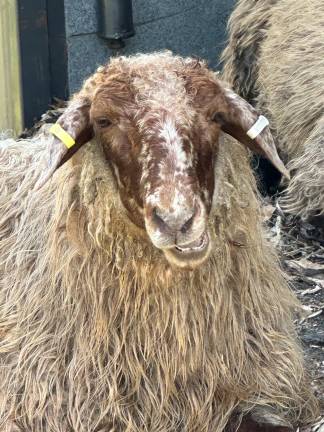
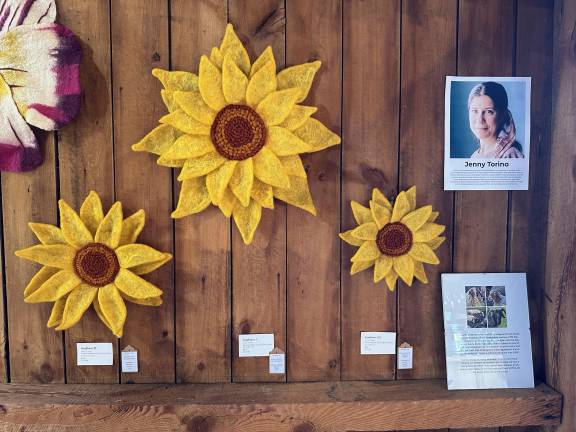
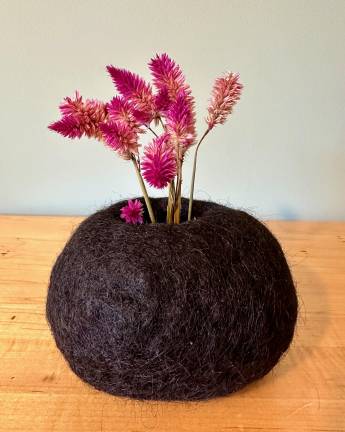
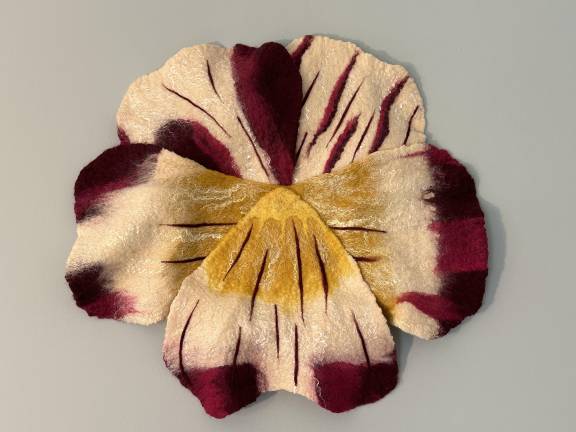
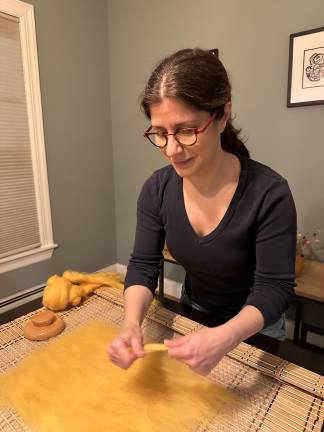
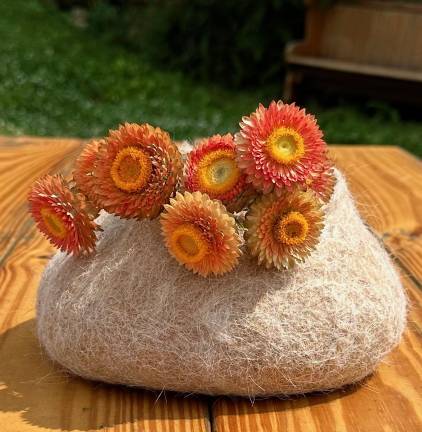
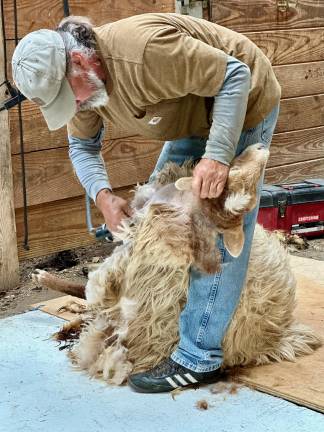
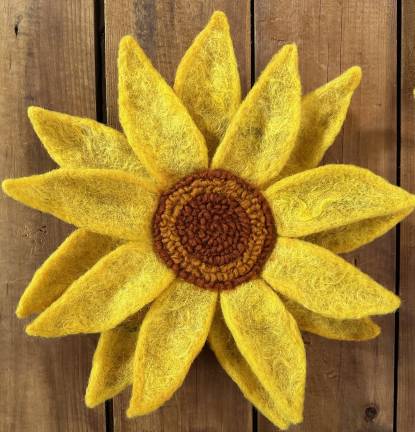
When Jenny Torino and her husband moved from Rhode Island to Warwick, NY in 2017, they left behind a thriving art community. “We moved here and there wasn’t a place we could continue doing sculpture,” said Torino. Torino, 46, is a registered dietician, but at heart she’s an artist who’s been immersed in one medium or another – performance art, metal sculpture, photography, printmaking – since majoring in experimental theater in college.
So Torino switched gears, getting into sewing at home, something she’d always been interested in since her time in theater and costume design. The interest in textiles took hold. When she happened upon a wet felting workshop at the New York Sheep & Wool Festival, she found it – her next medium.
Felting is the process of interlocking wool fibers, either with felting needles or by wet felting using soap, water and agitation. Wet felting, often used to make garments, scarves, hats and vessels, takes a lot of physical work, much like sculpture.
“What I really like is how tactile it is. It just feels good to work with the wool,” said Torino. “You’re laying out the fibers, and then you’re rolling for a long time and unrolling, and rubbing. I like the movement aspect, the body’s involvement in it.”
Torino put her nutrition counseling on hold and devoted herself full-time to art. “At first it was really difficult for me not to have structure, even though I had more time,” she said of that period. “I wanted to have somewhere to go to work and have people to connect with about the work.”
So she applied for a six-month artist residency last spring at All One One All Farm (AOOA) in Goshen, NY. She was already a regular at the farm, but the residency would give her structure and community, plus a chance to experiment with fleece from the farm’s flock of rare Karakul sheep, far more durable – and itchy – than the merino wool she typically worked with. (Also, as a nutrition counselor accustomed to working in an office, being on a farm twice a week was an opportunity “just to be around food in a different way.”)
Karakul wool was used by the nomadic tribes of Central Asia 2,000 years ago to make the coverings on their yurts along with horse blankets, hats and boots. In the age of athleisure wear you have to look hard for anything made of hardy Karakul wool, though hand weavers from Afghanistan to Africa to the American heartland do still use it to make rugs and saddle blankets.
Torino was drawn to its hairy coarseness. She hadn’t the faintest idea what she was going to do with it.
Accustomed to buying her wool online – soft, combed and packaged – helping out at her first sheep shearing in March was an eye opener. Turning that fleece into usable wool would be one of many lessons in patience that her residency would offer.
Torino and her 14-year-old daughter brought the bagged sheep fleece to Nobletown Fiber Works in Hillsdale, NY for processing. Fiber mill owner Lewis Cleale showed them how the wool is cleaned, carded and spun into yarn. That all takes time, Torino learned, and this batch of wool wouldn’t be ready until after her residency was over.
Time for Plan B. Farmer Alix Daguin had a stash of leftover wool from a previous shearing. It had been dyed at a local farm, but the colors hadn’t come out as she had expected, so into the closet it had gone, where it had sat around getting matted. “You can have this. I don’t know if you’re going to want it,” Daguin told Torino.
“It was so tangled it was practically felted already, but it was a perfect sunflower yellow,” Torino recalled. The stash also contained some indigo blue wool along with undyed brown and black wool from a sheep’s first shearing – softer and darker than usual Karakul fiber.
Torino got to work, spending a day pulling apart the fibers, combing them out and laying them into a sheet, all by hand. Since she’d never processed wool before she didn’t own a fiber comb.
It was an exercise in slowing down. “Even though I feel like I don’t have enough time to make, I can’t force myself to produce quickly,” she reflected.
The next day, she wet felted the whole sheet, and from it she began cutting flowers petals. Figuring it out as she went, Torino pieced together three sunflowers inspired by the ones at the farm entrance, whose seeds she enjoyed watching the goldfinches steal. She needle felted each petal to a domed wool center that would become the sunflower head. Lest anything be too easy, the wool for the domes also came from an endangered breed of sheep, the Gulf Coast Breed, which her husband, a neurologist, brought back from a Texas sheep farm. The finishing touch was ribbons of looped brown merino wool atop the domes, to form the sunflower seeds.
The sunflowers were a hit, so much so that she’s thinking about making more when the next batch of wool is processed. Two sold at the art show and the other Torino gave to her parents. Torino is toying with idea of dying some of the new raw wool herself, though whether her natural dyes will be strong enough to turn the brown Karakul wool yellow, she has no idea.
For Torino, that’s where the fun begins.
Torino is teaching a Wet Felted Flower Workshop at All One One All Farm on Sunday, May 18. She’s also teaching felting to students in the after school program run by the Warwick Area Farmworkers Organization. Their work will be on display at Wickham Works’ Treecycle on Saturday, April 26 in Stanley-Deming Park, Warwick.